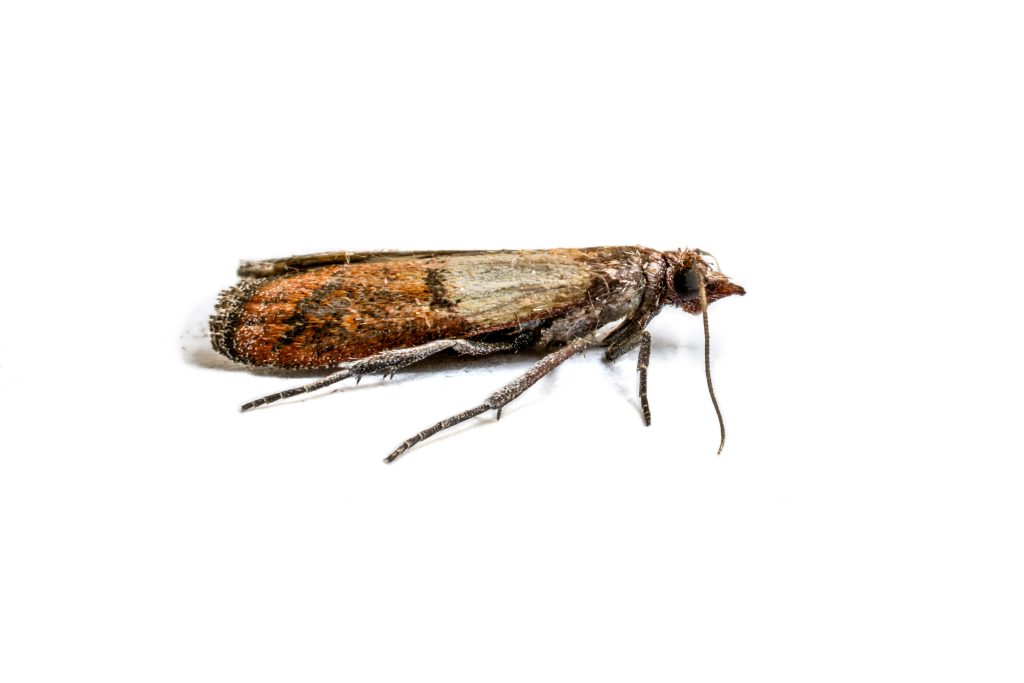This time of year it is common for swarms of various insects to attach themselves to your house – south facing walls in particular. They are attracted to the warmth, and looking for somewhere to over-winter.
Most commonly seen are ladybugs, box elder bugs and marmorated stink bugs. The latter are of the most concern as they can wreak havoc with vegetable gardens and fruit trees.
Getting rid of the swarms takes a bit of patience, as they are likely to return again and again. Some people spray them off with the hose, but they will likely just return. Doing it later in the evening, when it is cooler, might keep them away. The most effective way would be to use a hose-end sprayer bottle filled with soapy water. You can add a few drops of an essential oil for extra ammunition.
To keep them and other pests out of your home, seal up any cracks and crevices where they might gain entrance. Check screens for any tears and repair or replace.
Once in the home they will go into hibernation. However, warm spells will cause them to become active early. Stink bugs won’t reproduce indoors, and will look to get out in the spring. If you do see them in your home, either turn the vacuum on them or drop them in soapy water.
In the evening, place a pan of soapy water in the room where you’ve seen the most. Shine a single light on the pan and close the door.
If you choose to use the vacuum method, you need a vacuum that uses disposable bags. Remove the bag as soon as you’re finished and place in a plastic bag that can be sealed. Toss the bags in the trash, preferably outside. Use this method for box elder bugs and other pests as well.
In the garden, remove any debris where they might hide. During the growing season row covers are the best protection. Sunflowers planted at least six feet from the garden may act as a trap crop. Physically removing any stink bugs found on plants will help reduce the population – pick them off and drop them in a pail of soapy water.
You might see other shield-shaped bugs occasionally, not all are stink bugs. Most are garden pests, but some are harmless or even beneficial. To recognize the marmorated stink bug, look for white bands on the antennae. The rough stink bug (also known as brochmena) is one of the good guys. It looks a lot like the brown marmorated. However, it has no bands on the antennae, and has little bumps on its shoulders (where front-most legs meet body).
Meal Moths:

Also called meal moths, may be seen in packaged or stored dry foods. You are more likely to notice the larvae or webs in food packages. Pupae may be seen elsewhere in the pantry or kitchen. The adults are ½” long, narrow-winged gray and brown moths. They can be seen anywhere in the house, but are usually seen fluttering around a light source.
The moths often come into the house as eggs or larvae when you bring a load of groceries into the house. The best way to avoid them is by transferring any dry products from boxes or bags into glass, plastic or metal containers with tight fitting lids. Products that aren’t used often may be stored in the freezer. Food may also be frozen for four to seven days before storing to kill any larva that may be in the package.
If you do find presence of the pest in something, you should inspect all other susceptible foods and repackage if possible. Take everything out of the pantry, as pupae may be found anywhere outside of the original infested package. Inspect the outside of bottles and cans for cocoons or pupae. Vacuum all crevices before restocking.
Don’t forget to check dry pet foods and birdseed as well. The moth may also lay eggs in dried flower arrangements or wreaths. The presence of these pests in your food does not make it unsafe to eat, just unpalatable. If you’re comfortable removing the damaged portion of the food and using the rest, freeze what you keep as mentioned previously.
Ants
There are some insect invasions that can occur any time of the year. One of these is ants. The three most common ants found in the house are carpenter ants, odorous house ants and pavement (sugar) ants. Carpenter ants range in size from ¼” to an inch, while the other two are tiny, 1/8-1/4”

Ants are attracted to moisture, food and shelter. Being so small, ants can get in almost anywhere. If you start to see ants, step up your housekeeping. Clean baseboards, behind and underneath appliances. Check under your sink for leaks or damp spots. Keep your counters free of anything that might attract them, such as sugar bowls or butter. Search out hidden crumbs and missed sticky spots. Pick up pets’ food dishes as soon as they’re done eating. If you want to leave some of these things out in the open for convenience, place the containers in a slightly wider bowl filled with water. This will also act as a trap for the ants.
Cleaning with vinegar and water will both kill and repel the ants. Citrus will also repel them. Use citrus essential oils in your cleaning solution or leave citrus peels along the ant’s favored routes. Baking soda and borax are both lethal to ants – mix with sugar to use as a bait.






